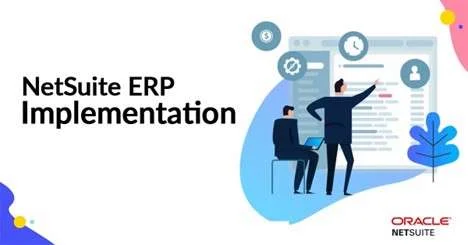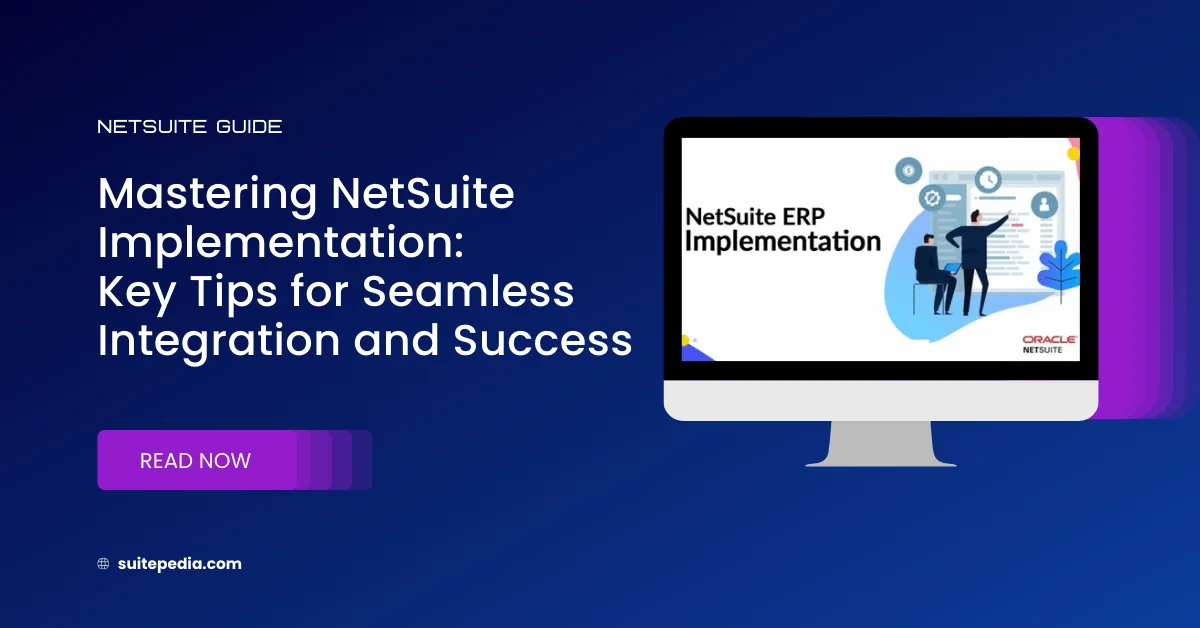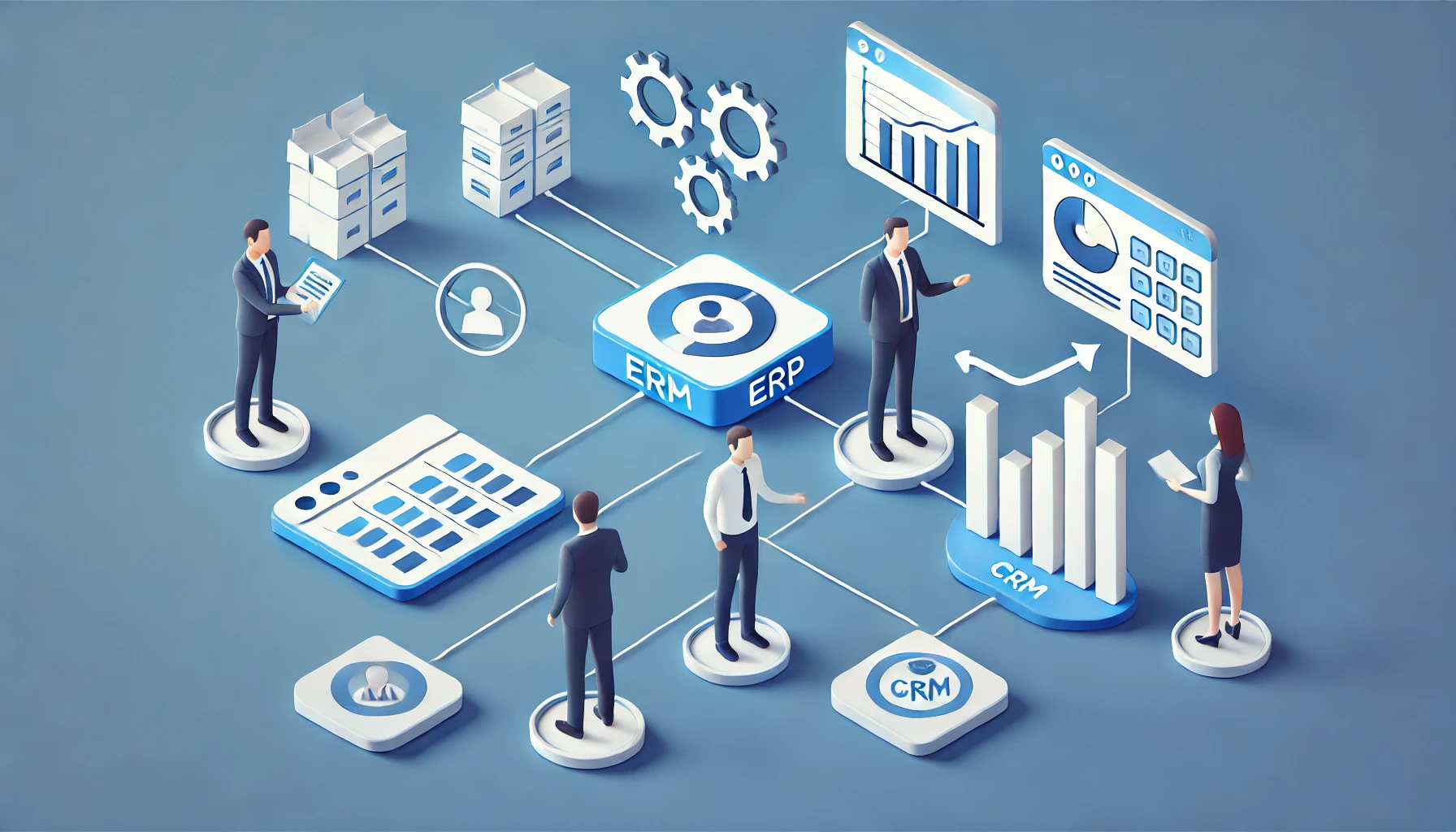Table of Contents
ToggleMastering NetSuite Implementation: Key Tips for Seamless Integration and Success
NetSuite, a prominent cloud-based Enterprise Resource Planning (ERP) solution, empowers businesses to streamline operations, enhance efficiency, and drive growth. Implementing NetSuite requires a structured approach, involving strategic planning, meticulous execution, and ongoing management. This comprehensive guide delineates a detailed roadmap for NetSuite implementation in 2023, enriched with real-life examples, best practices, actionable insights, and proven strategies.
NetSuite implementation tips
- Conduct a comprehensive analysis of organizational processes, pain points, and strategic objectives.
- Engage stakeholders to prioritize requirements and align NetSuite functionalities with business goals.
- Real-life example: A manufacturing company leveraged NetSuite to address inventory management challenges, streamline order processing, and enhance financial reporting.
- Evaluate the Total Cost of Ownership (TCO) associated with NetSuite implementation.
- Assess potential benefits such as operational efficiency, scalability, and Return on Investment (ROI).
- Develop a cost-benefit analysis to facilitate informed decision-making and resource allocation.

2. Assembling the Implementation Team
2.1. Executive Sponsorship
- Appoint a project sponsor from the executive leadership team to provide direction, support, and advocacy.
- Foster alignment between the implementation team and organizational objectives.
- Real-life example: A retail organization’s CEO championed NetSuite implementation, driving strategic alignment and resource allocation.
2.2. Cross-Functional Team
- Form a cross-functional team comprising members from IT, finance, operations, supply chain, human resources, and other relevant departments.
- Assign roles, responsibilities, and establish communication protocols to facilitate collaboration.
- Real-life example: A healthcare organization assembled a diverse team, leveraging expertise from various departments to ensure comprehensive coverage and compliance.
3. Planning and Preparation
3.1. Project Charter and Timeline
- Develop a detailed project charter outlining objectives, scope, deliverables, milestones, timelines, and resource requirements.
- Establish Key Performance Indicators (KPIs) and success criteria to measure progress and outcomes.
- Real-life example: A financial services firm crafted a comprehensive plan, incorporating stakeholder feedback, regulatory compliance, and risk management.
3.2. Data Migration Strategy
- Assess existing data sources, formats, quality, and integrity.
- Develop a data migration strategy encompassing cleansing, transformation, mapping, validation, and migration activities.
- Utilize data migration tools and best practices to ensure a seamless transition to NetSuite.
4. Configuration and Customization
4.1. System Configuration
- Configure NetSuite settings, modules, features, and functionalities based on business requirements and industry standards.
- Customize workflows, processes, dashboards, reports, and user interfaces to align with organizational policies and objectives.
- Real-life example: A professional services firm tailored NetSuite CRM, project management, time tracking, and billing modules to streamline client engagement and financial management.
4.2. Integration with Third-Party Applications
- Identify integration requirements with existing systems such as CRM, e-commerce, marketing automation, supply chain management, and financial accounting platforms.
- Utilize NetSuite’s integration tools, APIs, and middleware solutions to facilitate seamless data synchronization and exchange.
- Real-life example: A manufacturing company integrated NetSuite with its e-commerce platform, inventory management system, and financial accounting software to automate processes and improve accuracy.
5. Testing and Quality Assurance
5.1. Test Plan Development
- Create comprehensive test plans covering functional, integration, performance, security, usability, and user acceptance testing (UAT).
- Define test scenarios, scripts, data sets, environments, and criteria to validate NetSuite configurations and customizations.
- Real-life example: A healthcare organization conducted rigorous UAT to ensure compliance with regulatory requirements and data protection standards.
5.2. Test Execution
- Execute test scenarios, identify defects, and collaborate with the implementation team to resolve issues promptly.
- Document test results, lessons learned, and best practices for future reference and continuous improvement.
6. Training and Change Management
6.1. User Training
- Develop customized training materials, resources, guides, tutorials, workshops, and documentation to educate end-users on NetSuite functionalities.
- Real-life example: A manufacturing company conducted hands-on training sessions and workshops for employees, emphasizing process changes and system navigation.
6.2. Change Management
- Implement change management strategies, methodologies, frameworks, and practices to facilitate organizational adoption and acceptance of NetSuite.
- Real-life example: A retail organization established a change management office, communication plan, and support network to ensure a smooth transition and stakeholder engagement.
7. Go-Live and Post-Implementation Support
7.1. Go-Live Planning
- Develop a comprehensive go-live plan outlining cutover activities, contingency measures, and support mechanisms.
- Real-life example: A distribution company phased its go-live process, migrating data in batches and providing on-site support during critical business hours.
7.2. Post-Implementation Review
- Conduct post-implementation reviews, assessments, and evaluations to evaluate project success, outcomes, and performance.
- Real-life example: A financial services firm conducted a post-implementation review to validate project success and identify areas for improvement.
8. Risk Management and Mitigation Strategies
8.1. Risk Assessment
- Conduct a comprehensive risk assessment to identify potential challenges, obstacles, and vulnerabilities.
- Real-life example: A manufacturing company identified data security, compliance, integration, customization, user adoption, and performance risks.
8.2. Risk Mitigation Strategies
- Develop risk mitigation strategies, action plans, and contingency measures to address identified risks proactively.
- Real-life example: A healthcare organization implemented risk mitigation strategies such as encryption, access controls, monitoring, auditing, training, support, and optimization measures.
9. Performance Monitoring and Optimization
9.1. Performance Metrics
- Define performance metrics, benchmarks, standards, and KPIs to monitor NetSuite implementation’s effectiveness and efficiency.
- Real-life example: A retail organization implemented performance monitoring tools to track system performance, user activity, and transaction processing.
9.2. Performance Monitoring
- Establish performance monitoring mechanisms, tools, dashboards, and reports to track, analyze, and evaluate NetSuite implementation’s performance.
- Real-life example: A healthcare organization conducted performance optimization activities to improve system performance, user productivity, and financial outcomes.
10. Continuous Improvement and Innovation
10.1. Continuous Improvement Culture
- Foster a culture of continuous improvement, innovation, learning, collaboration, communication, and adaptation within the organization.
- Real-life example: A financial services firm established a continuous improvement program to engage employees and stakeholders in enhancing NetSuite functionality and performance.
10.2. Innovation Strategy
- Develop an innovation strategy, roadmap, and ecosystem to explore, evaluate, and leverage emerging technologies that complement and extend NetSuite capabilities.
- Real-life example: A manufacturing company implemented an innovation strategy to explore emerging technologies such as artificial intelligence, machine learning, blockchain, and automation.
Conclusion
NetSuite implementation is a strategic, complex, and transformative initiative that requires careful planning, execution, management, and optimization. By following these NetSuite implementation tips, organizations can navigate challenges, mitigate risks, capitalize on opportunities, and maximize the value derived from NetSuite’s integrated, intelligent, and innovative ERP solution. By leveraging real-life examples, best practices, actionable insights, and proven strategies, organizations can achieve operational excellence, strategic alignment, competitive advantage, customer satisfaction, employee engagement, stakeholder value, and organizational success with NetSuite. Embracing a holistic approach, fostering a culture of continuous improvement and innovation, and embracing emerging technologies will enable organizations to adapt, evolve, innovate, and thrive in today’s rapidly changing, highly competitive, and increasingly digitalized business environment.



